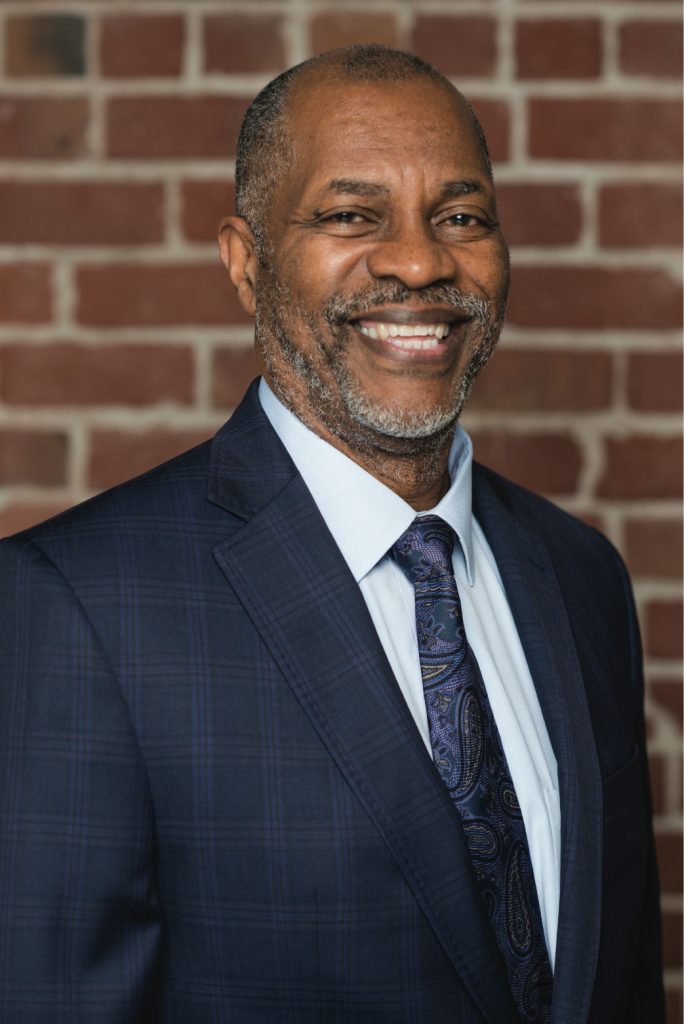Investing With an Eye Toward Equity

As president and CEO of the East Bay Community Foundation (EBCF), James W. Head has steered the nearly 100-year-old institution toward a racial and social justice equity model.
Since Head’s arrival at EBCF in 2014, the foundation has doled out $450 million in grants to hundreds of organizations. It has roughly 400 donors and has an asset base of around $840 million.
Head is leaving the organization after six years as the top executive, but before he goes, he discussed with The Giving List how the nationwide racial justice movement has solidified the foundation’s equity-based investment strategy and offered recommendations on how to embrace the movement further.
How have the COVID-19 pandemic, the murder of George Floyd, and the national reckoning around racial injustice influenced your foundation?
The COVID-19 pandemic and the protests and advocacy around George Floyd’s death were a stunning reminder of a number of systemic barriers impacting communities of color: employment, police violence, the need for affordable housing, access to healthcare. The foundation had already been working on addressing some of these systemic barriers, but with this nationwide emphasis on social justice, we began to think about where the foundation needed to go. To respond to the immediate needs surfacing in early 2020, we launched our COVID-19: A Just East Bay Response Fund.
The COVID-19 fund focused on supporting local nonprofits to work with communities impacted by the pandemic, the resulting economic fallout, and the existing systematic issues. We have put a lot of our emphasis and effort into strengthening the nonprofit infrastructure and providing donors with information that will allow them to understand what these underlying issues are.
Our board took a million dollars out of our endowment to seed the fund. We were able to raise another $7.4 million from corporate partners, other foundations, and very generous donors. We have given out a total of $8.4 million during the pandemic.
The success and impact of the COVID-19 Fund demonstrated that the vision of A Just East Bay we began forming in 2019 was on track. As we look to the future, our efforts are now focused on a new initiative called A Just East Bay Fund.
What is A Just East Bay Fund?
The Just East Bay Fund seeks to mobilize much-needed resources to support social movements creating deep systems change, empowering communities most adversely affected by societal injustices in Alameda and Contra Costa counties. There’s an intentional focus on BIPOC communities. It’s a participatory fund between private foundations, community foundations, and a community of donors that is centered on EBCF’s four core priorities: community organizing, power building, and movement building; capacity building with a racial equity lens; fostering inclusive economic models; and arts and culture for social and racial justice.
The Just East Bay Fund seeks to raise much needed resources to support social movements creating deep systems change.
The East Bay Community Foundation has called out the support of Black-led nonprofits. Why is this important, and what do you hope the Foundation’s investments will accomplish?
A lot of the data suggests that BIPOC-led nonprofits actually receive fewer resources, on average, than white-led nonprofits. This is especially true among Black-led organizations.
“In five years or 10 years, I think that this notion that we are a social and racial justice, equity-based philanthropic institution will be ingrained in the DNA of the foundation. That’s my hope and I think the board and the rest of the organization feel that way.”
– East Bay Community Foundation President and CEO James W. Head
When I came to the foundation in 2014, the first thing I began to hear was that there were a number of Black-led nonprofits in the Bay Area that had not recovered yet from the 2008 recession. They asked if the EBCF could help to identify ways that will allow them to be sustainable in their revenue sources, so they can scale up to meet the needs that were continuing in their communities.
In response, we created the program ASCEND:B.L.O., which stands for Accelerating and Stabilizing Communities through Equitable Nonprofit Development: Black-Led Organizations. Our goal there was to do two things: Lead an effort to get foundations and corporations to come together to support these organizations and provide them with capital and resources so that they could scale up where they had programs that were meeting community needs. Second, raise funding to allow organizations in a leadership transition phase to have the resources and the time they needed to ensure the transition was accomplished in a very powerful way that would allow the new leader to build on the success of the organization, and to move the organization further in the direction that the community felt was important.
Where do you foresee the foundation five years from now?
The foundation is on a path towards this notion of really redefining what a community foundation is, and how it responds to the community. In five years or 10 years, I think that this notion that we are a social and racial justice, equity-based philanthropic institution will be ingrained in the DNA of the foundation. That’s my hope and I think the board and the rest of the organization feel that way.
Do you have any suggestions on what needs to happen for the foundation and philanthropy as a whole to get there?
Yes, I do have some recommendations for the foundation and philanthropy more broadly.
Number one: Incorporating much more of what I call “solidarity strategies” in grantmaking and impact investing. Communities look different, they come in many flavors. But many issues that organizations address are overlapping. Philanthropy needs to pay attention to what these issues are and provide resources that allow organizations to come together.
Second recommendation: participatory grantmaking. That’s viewing our nonprofit grantees in the nonprofit sector as partners. Often there is this power imbalance where the grantor has the resources and the grantee is trying to get the resources. These organizations are the ones that are on the ground and they know what’s going on. We need to recognize that they are in a better position than we are to know what the community needs and what strategies will work best.
To end on, overall, I am hopeful. During my time at EBCF, I have become totally convinced that people with money, especially donors, will step up to the plate when asked and are very open to the idea of really, truly understanding how much more deeply these issues are ingrained.
